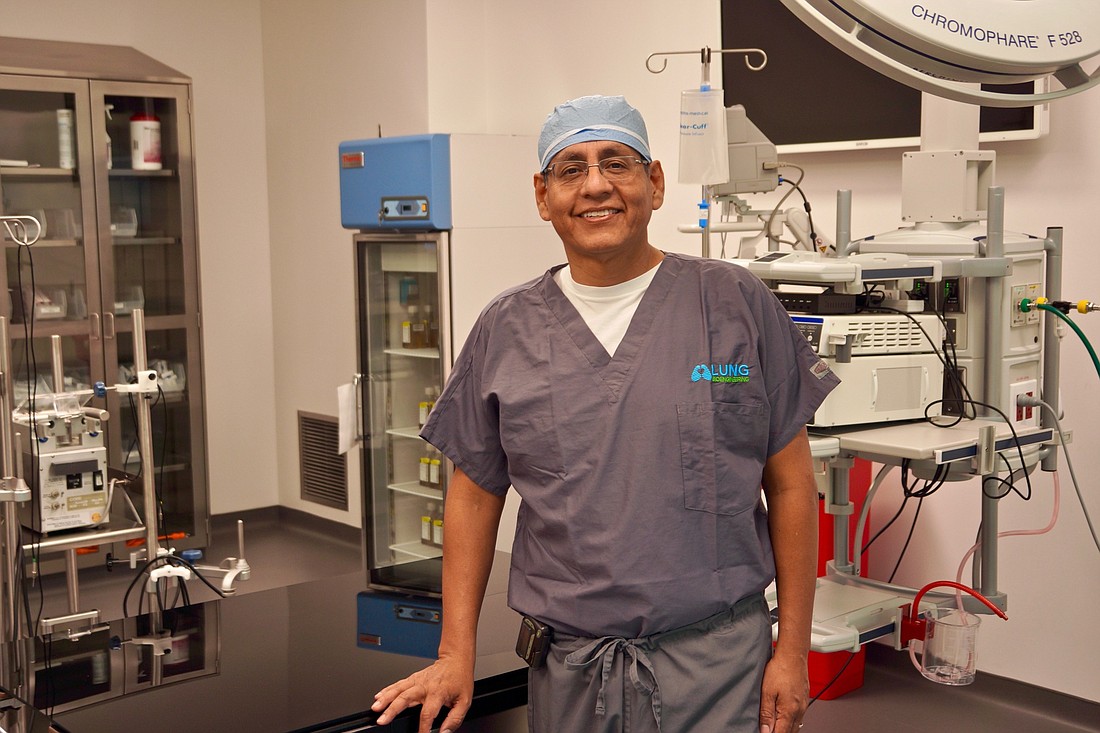
As a critical care resident from Peru studying at Saint Louis University, the process of a lung transplant caught Dr. Jorge Mallea’s attention.
“It was very interesting to me to see how you could actually change one person’s lungs for another person’s lungs and then make it work,” said Mallea, medical director of Mayo Clinic’s lung restoration facility.
“It was very intense, very labor demanding, intellectually, very challenging,” he said.
Mallea went on to complete his fellowship in pulmonary medicine at Saint Louis University in St. Louis, Missouri.
As he was looking for work, a mentor from his residency, Dr. Cesar Keller, recruited him to join the lung transplant team at Mayo Clinic.
Two other doctors he knew from St. Louis already were at Mayo Clinic in Jacksonville, so Mallea joined the hospital in 2003.
In 2015, Mayo Clinic announced it would partner with United Therapeutics to develop a lung restoration center on its Jacksonville campus.
The form of regenerative medicine is designed to take donor lungs that previously would have been unusable and turn them into viable transplant organs.
The center is on the first floor of the new Discovery and Innovation building on Mayo Clinic’s campus.
In August, Mallea became medical director of the facility. He believes the technology can change the way lung transplants are done.
The ex-vivo lung perfusion technology, which is used in the facility, allows for the lung restoration team to spend more time with donor lungs, which would help make more lungs available for transplant.
Mallea said the technology can make the lungs treated in the Jacksonville facility better than the standard lung, and last longer than the typical lung transplant.
He wants to save the nearly 400 people who die annually waiting for a lung transplant.
“The goal is to chop that number from 400 to zero,” Mallea said.
So far, only trials have been completed in the Mayo Clinic facility, which opened in August. When it receives FDA approval, which likely will be in January, the facility will have the capacity to treat nearly 900 lungs each year.
Aside from serving as medical director of the facility, Mallea works as a pulmonologist, seeing patients suffering from COPD or emphysema on campus.
He said those patients, given the nature of their disease and chance of mortality within the next year, often are low on the list to receive a transplant.
Part of his work at Mayo Clinic is trying to find solutions for those patients. He’s working on developing a trial to treat COPD patients with mesenchymal stem cells, but it’s in the early stages, he said.
Mallea said he and the United Therapeutics team also hope to be able to regenerate lungs using biomaterials or stem cells in the future, which would create more ways to increase the lung donor pool.
“Sometimes it’s looking into the future and it looks like science fiction,” Mallea said. “But it really is exciting, the things that we can do, or the things that we’re hoping to do soon.”
Working on the lung transplant and now lung restoration teams has been rewarding, Mallea said. He’s seen lung restoration in action at United Therapeutics’ Silver Spring, Maryland, facility, which performs the procedures.
Sometimes lungs will come into the facility, and it’s unclear if they will work for a transplant. After inspection and “by tweaking a few things,” those lungs can then be suitable, he said.
“You can see the difference that having them in the facility can make,” he said. “So that’s definitely a satisfaction of being part of that team, being able to know that another person’s getting a second chance of life because they’re receiving lungs that are going to save their lives.”
Mallea considers himself “lucky to be in a situation where I can be part of developing, discovering and hopefully transforming the future with a great team.”